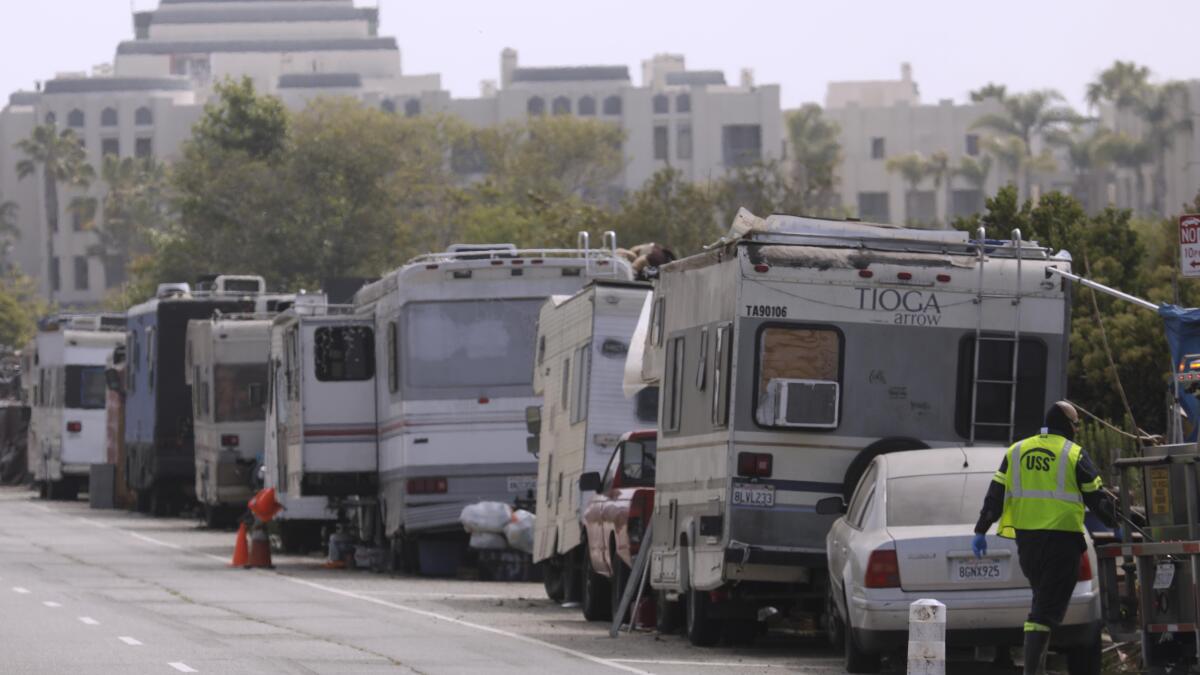Packy Adams, a 70-year-old Fremont native, has been living out of his car with his dog Zeus for the past three years. Adams, who spends his days recycling aluminum cans to earn money for food, has adapted to this harsh reality. “This is my best friend, companion, everything,” Adams said about Zeus. He parks overnight in city parking lots, ensuring he leaves no trace behind. “No mess, no complaints, no cops,” he emphasized. Meanwhile, San Francisco’s recent clearing of an RV encampment along Lower Great Highway received mixed reactions, reflecting the complex and often contentious nature of addressing homelessness.

Impact on Local Residents
In Fremont’s Irvington Park, a row of RVs and cars has settled in, causing concern among nearby residents. Sheila Mani, who lives across the street, noticed the vehicles appearing about six months ago. She believes the city is simply shifting the problem from one location to another. “The city I think just moved or shifted from one place to another. It’s been bouncing around,” Mani said.
The presence of the RVs has significantly impacted Mani’s quality of life. “It’s preposterous for me to even say this, that I’m a prisoner inside my own home,” she stated. The noise and fumes from the generators running in the RVs have forced her to keep her windows shut. Mani stressed that her concerns stem from safety, not privilege. “It is extremely hot, they need to have the generators on, they need to have a life too, but how does their problem become our problem?” she asked. Similarly, Priya Chouhan expressed concerns about safety and privacy. “Every time we enter or exit our home it just feels like somebody is watching us and we don’t at all feel safe in our own home,” Chouhan said.
Fremont’s Response to the Crisis
On Tuesday, Fremont city council members considered adopting a 5-year Strategic Plan to Address Homelessness. The city acknowledges that the largest segment of its homeless population resides in vehicles. Consultant Elaine de Coligny emphasized the need for a long-term solution. “Safe parking is not a solution to homelessness; it is a management strategy. And we wanted this plan to focus on the solutions,” de Coligny stated.
The city faces a daunting challenge: for every person who exits homelessness, more than two others become newly unhoused. This reality underscores the urgency of finding effective solutions. Adams, unable to park at one of the city’s safe parking sites due to his unregistered vehicle, continues to seek out parking lots where he and Zeus can stay out of sight. His situation highlights the complexities and gaps in the current system designed to assist the unhoused.

Seeking Solutions
Fremont’s struggle with homelessness is a microcosm of a broader issue affecting many communities. While the city’s efforts to develop a strategic plan are a step in the right direction, the immediate needs of both the unhoused population and residents must be balanced. Ensuring safety, privacy, and a path to permanent housing for those like Adams are critical components of any successful strategy. As Fremont moves forward, collaboration between city officials, residents, and advocates will be essential to creating a sustainable solution for all.
